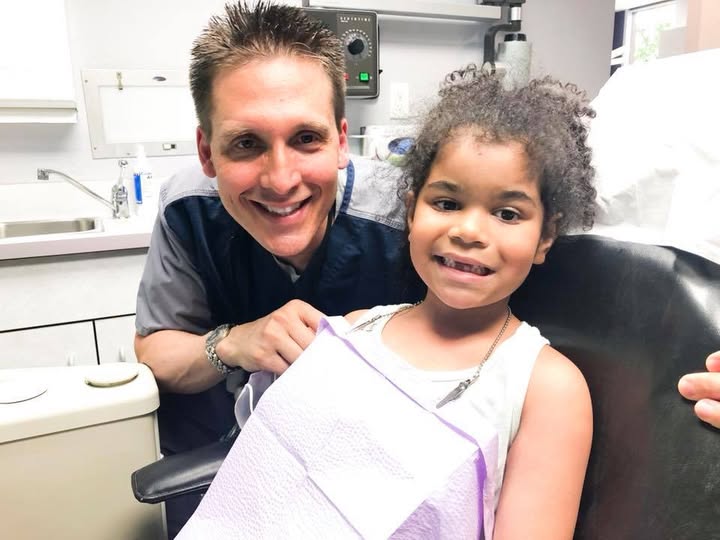
Dr. Andrew Ross welcomes all ages of patients, which can start as early as four years of age, and sometimes earlier if a child experiences a dental problem such as a black spot on a tooth or pain in the mouth. What is much more important than the first dental visit is for the parents to understand what causes cavities and what constitutes good daily home care for the child at any given particular age. Childrens dental needs are different at each age, which is based on the stage of development in the oral cavity. Dr. Andrew Ross and his office staff will provide clear nutritional counseling and demonstrate proper care of the teeth to both the child and the parents on an individual basis. There are many considerations, such as how to care for the mouth that has no teeth, what to expect as teeth erupt, when and how to brush and floss, when to use fluoride and how much, when to begin to curtail thumb sucking behaviors, and more.
The first dental visit is mostly important for the child to become familiar with the entire dental experience. This includes meeting Dr. Ross and the office staff to the sights, sounds, smells, and the feel of sitting in a dental chair to allow the doctor to gently examine their teeth. Each successive visit will then allow the child to grow and gain comfort with the healthy habit of regular dental check-ups and professional cleanings.
Establishing good daily oral hygiene habits is one of the initial challenges of dentistry for children. Once this is established, and the child is seen regularly for cleanings and check-ups, the road will be much smoother. But, it is often a bumpy ride, so parents, hang in there!
Sealants are an easy, affordable and painless way to help prevent cavities. They are thin protective coatings that are generally placed on the chewing surfaces of the permanent back teeth that are susceptible to getting cavities.
The sealant itself is made of a material similar to a composite filling (white filling). This material flows into the pits and grooves of teeth that the bristles of a tooth brush can’t reach to keep clean, and once it is set, it acts to prevent these surfaces from getting a cavity by creating a smooth surface that is readily cleanable.
Sealants
Sealants are typically first placed when the permanent first molars erupt into place, which generally occurs around six years old. Sealants are then placed as needed when the remaining permanent teeth erupt. In some instances, front teeth as well as baby teeth can benefit from sealants. Sealants eventually wear away and have to be reapplied.
Fluoride
Fluoride is effective in helping to prevent cavities and in reversing the early signs of tooth decay for both children and adults. It does this by integrating into the structures of the teeth, which makes them stronger and less susceptible to the damage created by the bacteria that cause cavities.
Fluoride is found naturally as a mineral in all water sources, even the ocean. Like any other nutrient, it is safe and effective when used properly. Too much fluoride can lead to a permanent staining of the teeth, called fluorosis. Too little, and the teeth are more susceptible to getting cavities.
Fluoride is added to the teeth either topically or systemically. When applied topically, fluoride is placed on the teeth and then later expectorated. Applying it systemically, fluoride is ingested and then becomes incorporated into the developing tooth structures.
Topical forms of fluoride include tooth pastes, mouth rinses, and professionally applied fluoride therapies at the dental office. Systemic forms include community water fluoridation or dietary supplements to be taken from 6 months to 16 years old. Helping to prevent dental decay requires a proper mix of both forms of fluoride. Dr. Ross will help assess whether you are receiving adequate levels of fluoride for all family members from the two forms (topical and systemic).
Don't forget to fill out the forms!
Make sure you download our forms ahead of time so you can walk in to your appointment with no waiting time.
